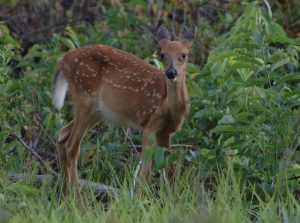 Florida’s ranches are home to more than just the intended livestock, a lot of endangered species seek shelter and food amongst these lands. A lot of these animals act as keystone species and their protection is vital to the overall eco system in which we all depend on.
Florida’s ranches are home to more than just the intended livestock, a lot of endangered species seek shelter and food amongst these lands. A lot of these animals act as keystone species and their protection is vital to the overall eco system in which we all depend on.
What can planting wildlife food plots do for you?
Increase the influx and livelihood of turkey, doves, quail, white-tailed deer, and more! Support watershed function on your property which will lead to enhanced natural resource protection for the exponentially growing world we live in. Planting wildlife food plots will increase the intended food production on your land while also supplementing various game species.
Food plots could be grains, legumes, and grasses, all of which provide food during the winter for wildlife on your ranch. Plot sizes differ depending on the type of wildlife you intend. Deer plots should be 1-3 acres per 100 acres and smaller species such as quail or rabbits prefer ¼ to ½ acre plots every 15-20 acres.
We are just shy of the optimum planting season for cool season food plots, but depending on weather conditions that time frame can be altered to later in the winter. Typically, planting winter food plots should take place between October through early December.
Management of the natural vegetation will have an even larger impact on the overall habitat than food plots alone. Some examples of management practices that will improve conditions for wildlife while conserving nature’s resources:
- Grassed Waterways– A food source for birds and other species. Reduces erosion and sedimentation.
- Wetland Enhancement– Provide an area for species to thrive ranging from microbes to water fowl. Wetlands are crucial in maintaining ideal water quality and quantity. The EPA refers to wetlands as “biological supermarkets”, attracting many different species due to the food and habitat they promote.
- Pasture Border– Shrubs or legume mixes are just a couple of examples of cover that will provide sustenance and shelter for birds and other wildlife. This property buffer will also aid in erosion and runoff; particularly effective if your property is sloped and already susceptible to erosion.
- Rotational grazing– Implementing this pasture management regime on your operation will improve the overall forage conditions for livestock and wildlife.
 0
0
